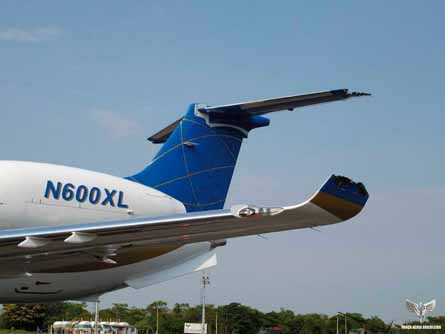FSF president pleads for industry to rethink 1970s rules
Pilot organisations, airlines, air navigation service providers (ANSP), national aviation authorities (NAA) and the International Civil Aviation Organisation should combine to resolve the issue of flying offset - rather than centreline - airway tracks to avoid collisions in the event of an altitude deviation, says Flight Safety Foundation (FSF) president Bill Voss.
Speaking at the ATC Maastricht 2007 conference last week, Voss pleaded for "more co-operation across the cultures" to sort out soluble problems caused by entrenched attitudes or failure to recognise an issue.
Voss says the fatal head-on collision between an Embraer Legacy business jet and a Gol Airways Boeing 737-800 in Brazil last year proved that the track offset issue needs revisiting.
Could offset flying prevent collisions? |
So much has changed since the original rules mandating centreline flying were written in the late 1970s, he says, that reviewing approved practices is badly needed. The demand for accurate centreline flying and resistance to offsets came in an en-route environment dominated by VOR-designated airways that were moved closer to accommodate traffic growth.
Since that time, flight management system-flown area navigation using DME/DME (multiple distance measuring system fixes) and satellite navigation has simultaneously made navigation much more accurate and offset flying easy. Yet no review of the risks of precision centreline flying on two-way airways has taken place, Voss says, and calls from pilot organisations for organised offset flying have been ignored.
Voss also wants "cross-cultural" dialogue between airlines and airports on runway excursions. It is, he says, the commonest cause of serious damage and hull write-offs.
Source: Flight International
























